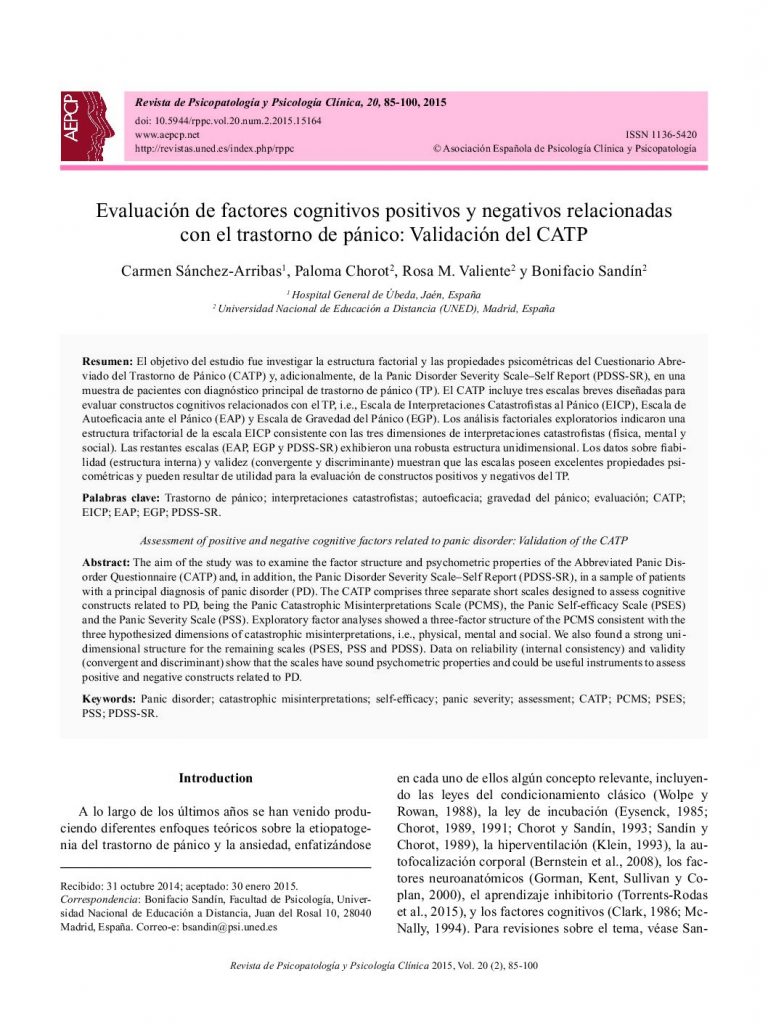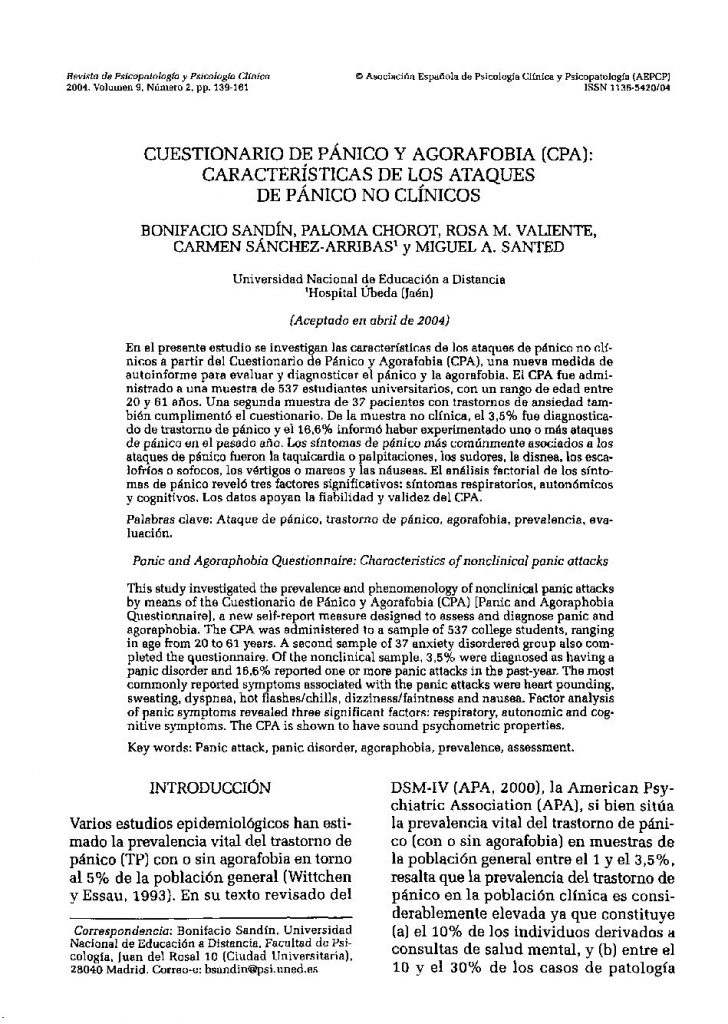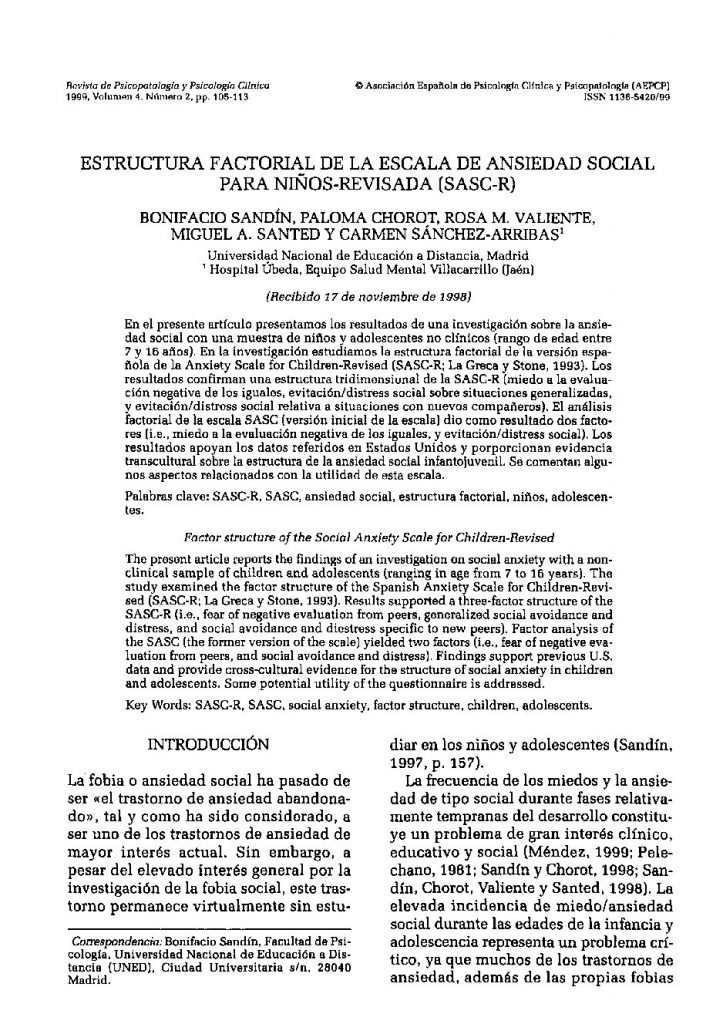Evaluación de factores cognitivos positivos y negativos relacionados con el trastorno de pánico: Validación del CATP.

- Evaluación de factores cognitivos positivos y negativos relacionados con el trastorno de pánico: Validación del CATP.
- Predictores de recuperación subjetiva en la esquizofrenia.
- Variables de interés clínico en el tratamiento cognitivo-conductual de la adicción a la cocaína: la especificidad de los trastornos de la personalidad.
- Inventario de supresión del pensamiento del “oso blanco” (WBSI): Propiedades psicométricas de la versión portuguesa (Portugal).
- Cuestionario de Observación de la Conducta Bulímica (COBU): Desarrollo de un instrumento para cuidadores de pacientes con bulimia nerviosa.
- Eficacia del tratamiento con neurofeedback para los trastornos del espectro autista: Una revisión sistemática.
- Efectos de la terapia cognitivo-conductual sobre la depresión en personas mayores institucionalizadas.
- Congresos y reuniones científicas 2015.
The aim of the study was to examine the factor structure and psychometric properties of the Abbreviated Panic Disorder Questionnaire(CATP) and, in addition, the Panic Disorder Severity Scale–Self Report (PDSS-SR), in a sample of patients with a principal diagnosis of panic disorder (PD). The CATP comprises three separate short scales designed to assess cognitive constructs related to PD, being the Panic Catastrophic Misinterpretations Scale (PCMS), the Panic Self-efficacy Scale (PSES) and the Panic Severity Scale (PSS). Exploratory factor analyses showed a three-factor structure of the PCMS consistent with the three hypothesized dimensions of catastrophic misinterpretations, i.e., physical, mental and social. We also found a strong unidimensional structure for the remaining scales (PSES, PSS and PDSS). Data on reliability (internal consistency) and validity (convergent and discriminant) show that the scales have sound psychometric properties and could be useful instruments to assess positive and negative constructs related to PD.
El objetivo del estudio fue investigar la estructura factorial y las propiedades psicométricas del Cuestionario Abreviado del Trastorno de Pánico (CATP) y, adicionalmente, de la Panic Disorder Severity Scale–Self Report (PDSS-SR), en una muestra de pacientes con diagnóstico principal de trastorno de pánico (TP). El CATP incluye tres escalas breves diseñadas para evaluar constructos cognitivos relacionados con el TP, i.e., Escala de Interpretaciones Catastrofistas al Pánico (EICP), Escala de Autoeficacia ante el Pánico (EAP) y Escala de Gravedad del Pánico (EGP). Los análisis factoriales exploratorios indicaron una estructura trifactorial de la escala EICP consistente con las tres dimensiones de interpretaciones catastrofistas (física, mental y social). Las restantes escalas (EAP, EGP y PDSS-SR) exhibieron una robusta estructura unidimensional. Los datos sobre fiabilidad (estructura interna) y validez (convergente y discriminante) muestran que las escalas poseen excelentes propiedades psicométricas y pueden resultar de utilidad para la evaluación de constructos positivos y negativos del TP.





